As the Egyptian sun dips below the horizon, casting a golden glow over the bustling streets of Cairo, I sit back, reminiscing about our recent journey to Alexandria, a city that seamlessly weaves together the threads of ancient history and modern vibrancy.
Our adventure began yesterday with an early departure from Cairo. The 250km journey to Alexandria was a smooth ride, courtesy of the impressive five-lane roads.The 2h30 drive was a journey through time, leaving behind the pulsating energy of Cairo and moving towards the dynamic embrace of the Mediterranean.
Upon our arrival in Alexandria, our first stop was the Modern Library of Alexandria, a beacon of knowledge and a symbol of the city’s enduring legacy as a center of learning and culture.
This architectural marvel, a reincarnation of the ancient world’s most famous library, left us in awe with its vast collections and innovative design.
Bibliotheca Alexandrina: Reviving the Legacy of the Ancient World
The modern Bibliotheca Alexandrina, a reimagining of the ancient Great Library of Alexandria, is a stunning ode to the pursuit of knowledge and a symbol of Egypt’s dedication to cultural and scholarly excellence. Inaugurated in 2002, this monumental library and cultural center is situated near the site of the ancient library, reviving the legacy of one of the most famous libraries in human history.
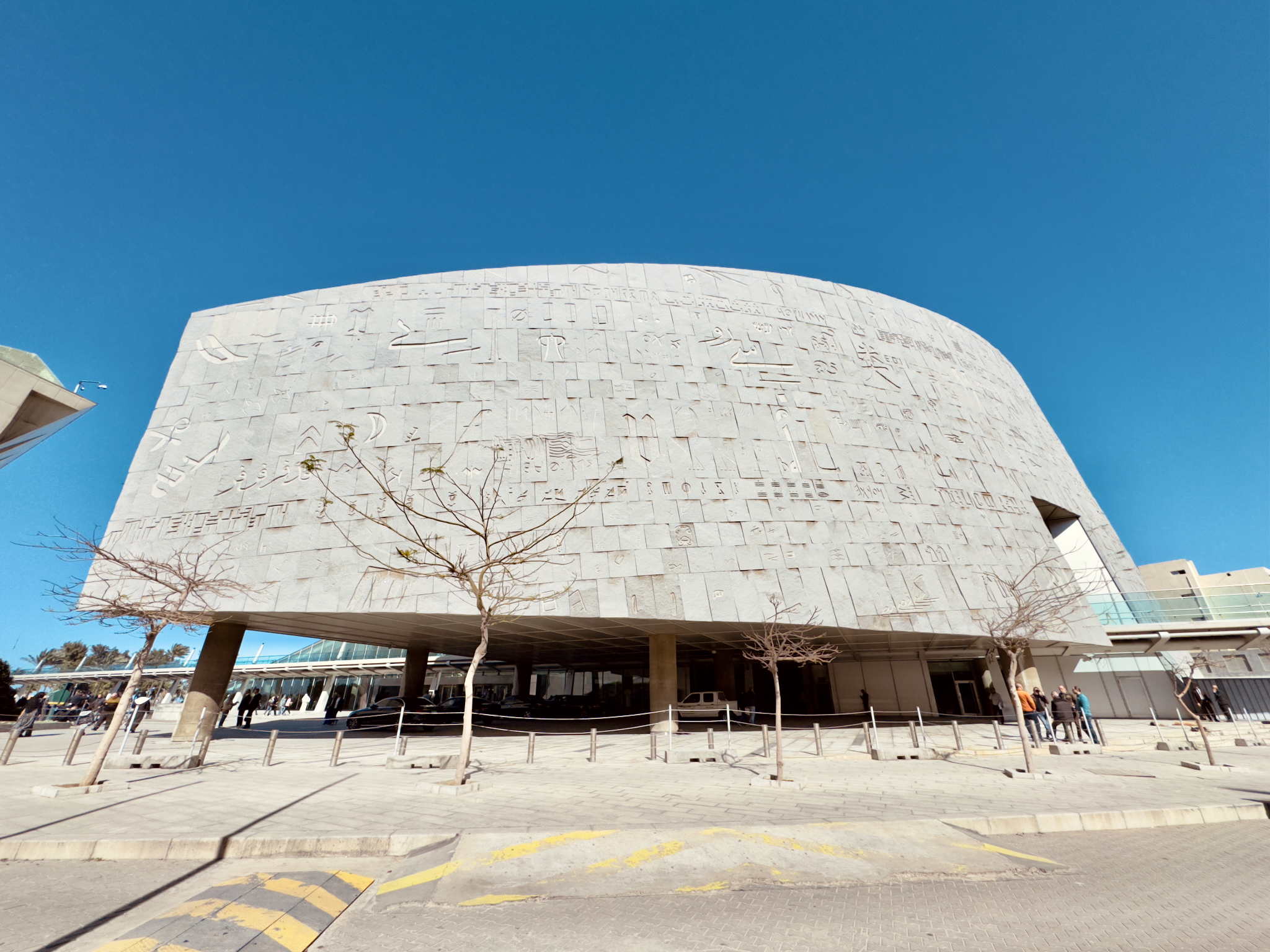
Bibliotheca Alexandrina is a marvel. Designed by the Norwegian architectural firm Snøhetta, its disc-like structure, evoking the image of a rising sun, is a blend of contemporary design and ancient symbolism. The building’s facade, a tilted gray granite wall, is adorned with characters from over 120 different scripts, symbolizing the diversity of human language and knowledge. The main reading room, covered by a vast, glass-paneled roof, spans an impressive 70,000 square meters, making it one of the largest reading spaces in the world.
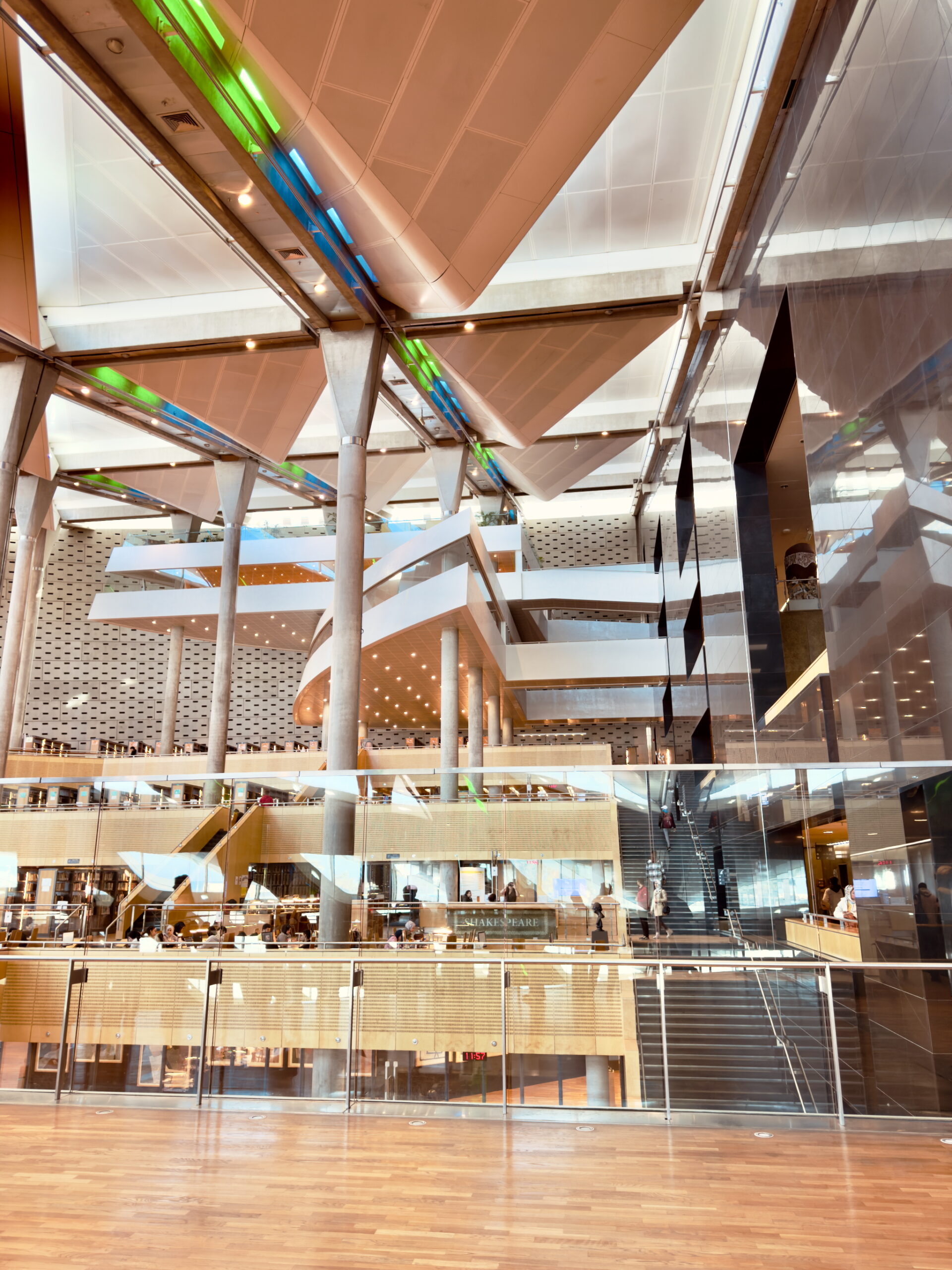
The library’s collections are vast and diverse, aiming to house millions of books. It serves as a repository of the world’s knowledge, much like its ancient predecessor, with a significant focus on digitalization and preservation of rare texts and manuscripts. The Bibliotheca Alexandrina also houses several specialized libraries, including ones for maps, multimedia, the visually impaired, young people, and children.
But the Bibliotheca Alexandrina is more than just a library. It’s a cultural complex, equipped with a conference center, galleries for art exhibitions, a planetarium, and several museums. These include the Antiquities Museum, showcasing artifacts found during the construction of the library, and the Manuscript Museum, preserving rare manuscripts and books. This makes the library a hub for cultural events, intellectual exchange, and artistic expression.
The revival of the library in modern Alexandria symbolizes the city’s enduring role as a beacon of learning and cross-cultural dialogue.
The Bibliotheca Alexandrina is not only a tribute to the past but also a forward-looking institution, embracing the digital age and fostering global knowledge exchange. It stands as a reminder of the historical significance of Alexandria as a center of learning and as a beacon of hope for future generations dedicated to the pursuit of knowledge and cultural understanding.
Our exploration worked up an appetite, leading us to a charming seaside restaurant. As we savored our late lunch, the beautiful vista of the Mediterranean Sea unfolded before us, its waves gently caressing the shore, a moment of pure tranquility.
Next, we explored the mighty citadel, standing guard over the city’s coastline. This historic fortress, with its robust walls and strategic location, offered us not only a glimpse into Alexandria’s storied past but also breathtaking views of the sea.
The Citadel of Alexandria: A Fortress of History and Culture
The Citadel of Alexandria, also known as the Qaitbay Citadel, is a formidable fortress located on the eastern tip of the Pharos Island, overlooking the Mediterranean Sea. This citadel is not only a symbol of military strength but also a living testament to the historical evolution of Alexandria through various epochs.
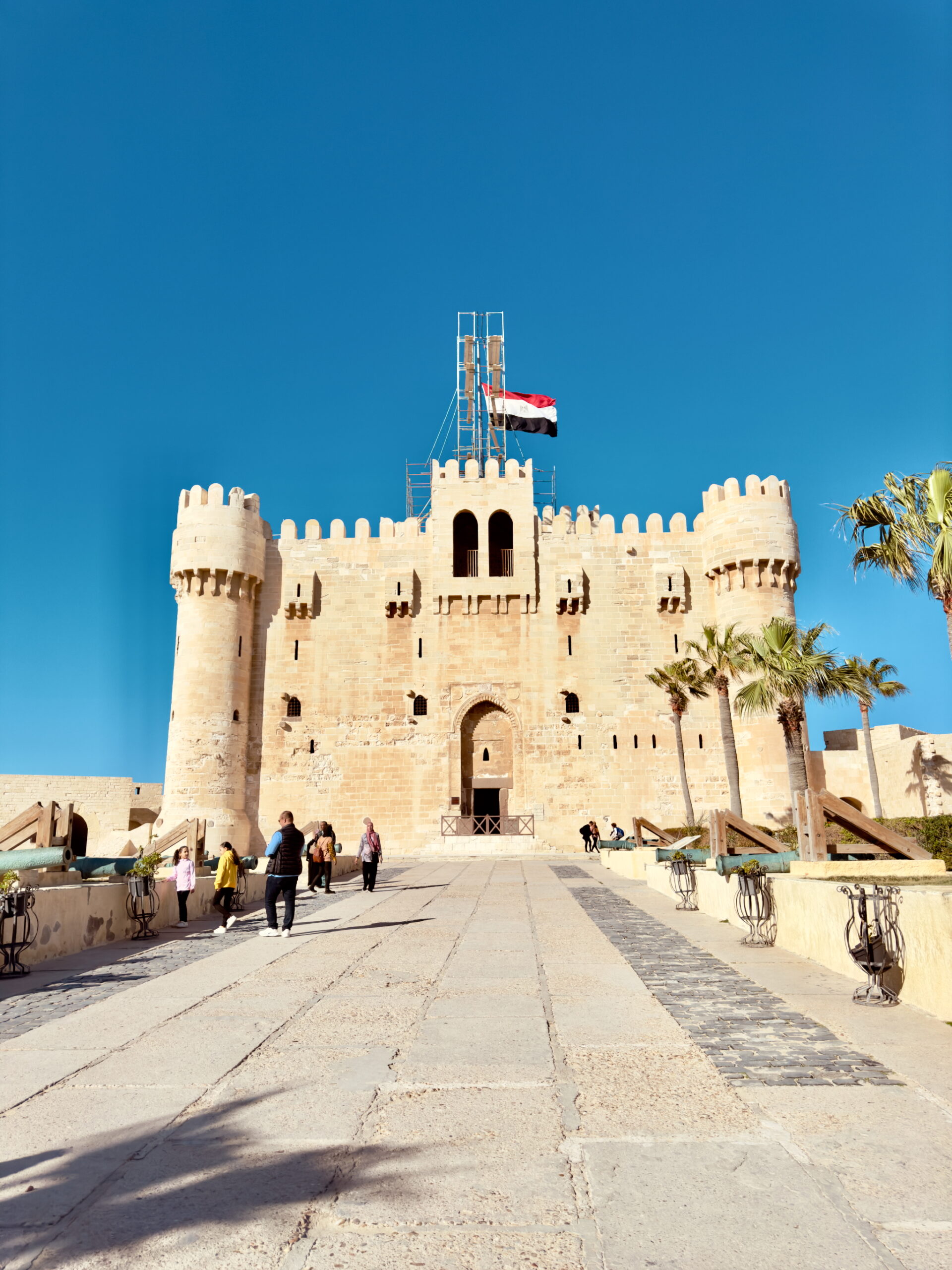
Constructed in the 15th century by Sultan Al-Ashraf Sayf al-Din Qaitbay, the citadel was built on the exact site of the ancient Pharos Lighthouse, one of the Seven Wonders of the Ancient World. The lighthouse had succumbed to a series of earthquakes prior to the citadel\’s construction. Qaitbay, recognizing the strategic importance of this location for defending Alexandria against Ottoman expansion, ordered the building of this fortress using the remnants of the once-glorious lighthouse.
This decision embedded the citadel with a deep historical significance, linking it to the ancient world while serving the needs of the present.
Architecturally, the Citadel of Qaitbay is a prime example of Mamluk military architecture. It features a rectangular layout with massive walls and round towers. The design was intended to withstand the artillery of the time, reflecting the military innovations and architectural advancements of the 15th century. Inside, the fortress is organized around a central courtyard, with various halls, chambers, and a mosque, which showcases the intricate Islamic art and architecture.
Over the centuries, the citadel has witnessed numerous historical events and has undergone various renovations and restorations. In the 19th century, it was equipped with modern defenses to protect against a potential British attack. However, its military importance gradually diminished, and it eventually transformed into a historical site.
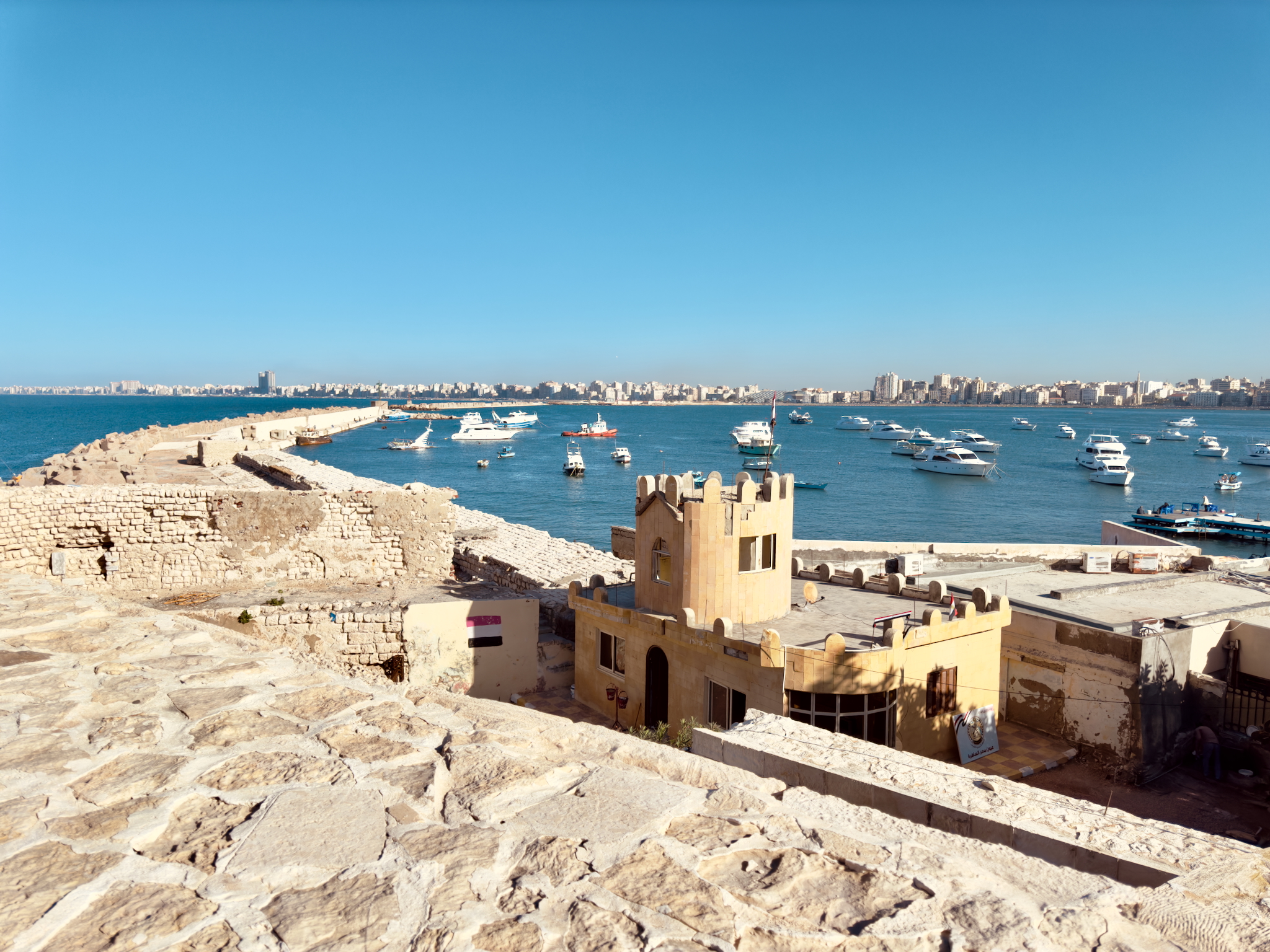
Today, the Citadel of Qaitbay is a significant tourist attraction and a cultural landmark. It offers visitors a glimpse into the rich history of Alexandria, blending the city’s ancient past with medieval architectural splendor. The fortress not only provides a panoramic view of the Mediterranean Sea but also serves as a poignant reminder of Alexandria’s resilience and strategic importance throughout the ages. The citadel, in essence, is a bridge connecting the ancient legacy of the Pharos Lighthouse with the enduring heritage of Islamic architecture and Egyptian history.
The afternoon led us to the Montaza Palace, a jewel of Alexandrian heritage. Its opulent design and lush gardens were a delightful contrast to the urban landscape of Cairo.
Montaza Palace: A Royal Oasis in Alexandria
The Montaza Palace, a splendid architectural marvel, is steeped in both grandeur and history. Nestled amidst expansive lush gardens, this palace complex serves as a sterling reminder of Egypt’s royal past and architectural evolution in the 20th century.
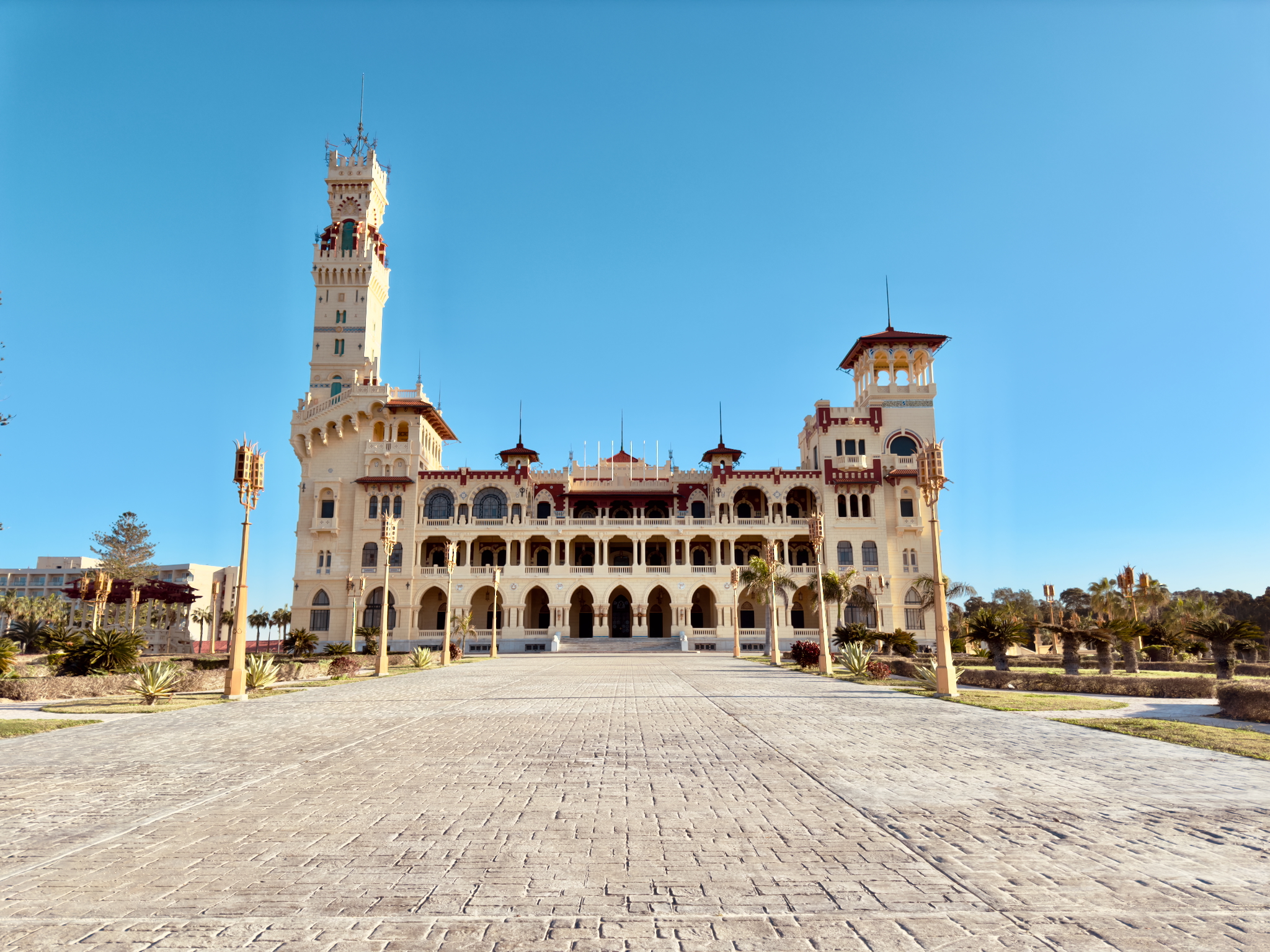
The palace’s genesis traces back to the reign of Khedive Abbas II, the last Khedive of Egypt and Sudan, who commissioned its construction in 1892. Initially, the site was intended as a hunting lodge, but it evolved into a more luxurious summer palace, designed in a unique blend of Ottoman and Florentine styles.
The main palace, known as Al-Haramlik, is particularly notable for its distinctive design. It combines a variety of architectural elements – Turkish, Moorish, and Florentine – creating a visually stunning structure that stands as a testament to the eclectic tastes and influences of the time.
The Salamlek Palace, another significant building within the Montaza complex, was added later by King Fuad I. It served as a residence and casino but has since been transformed into a luxury hotel, maintaining much of its original charm and elegance.
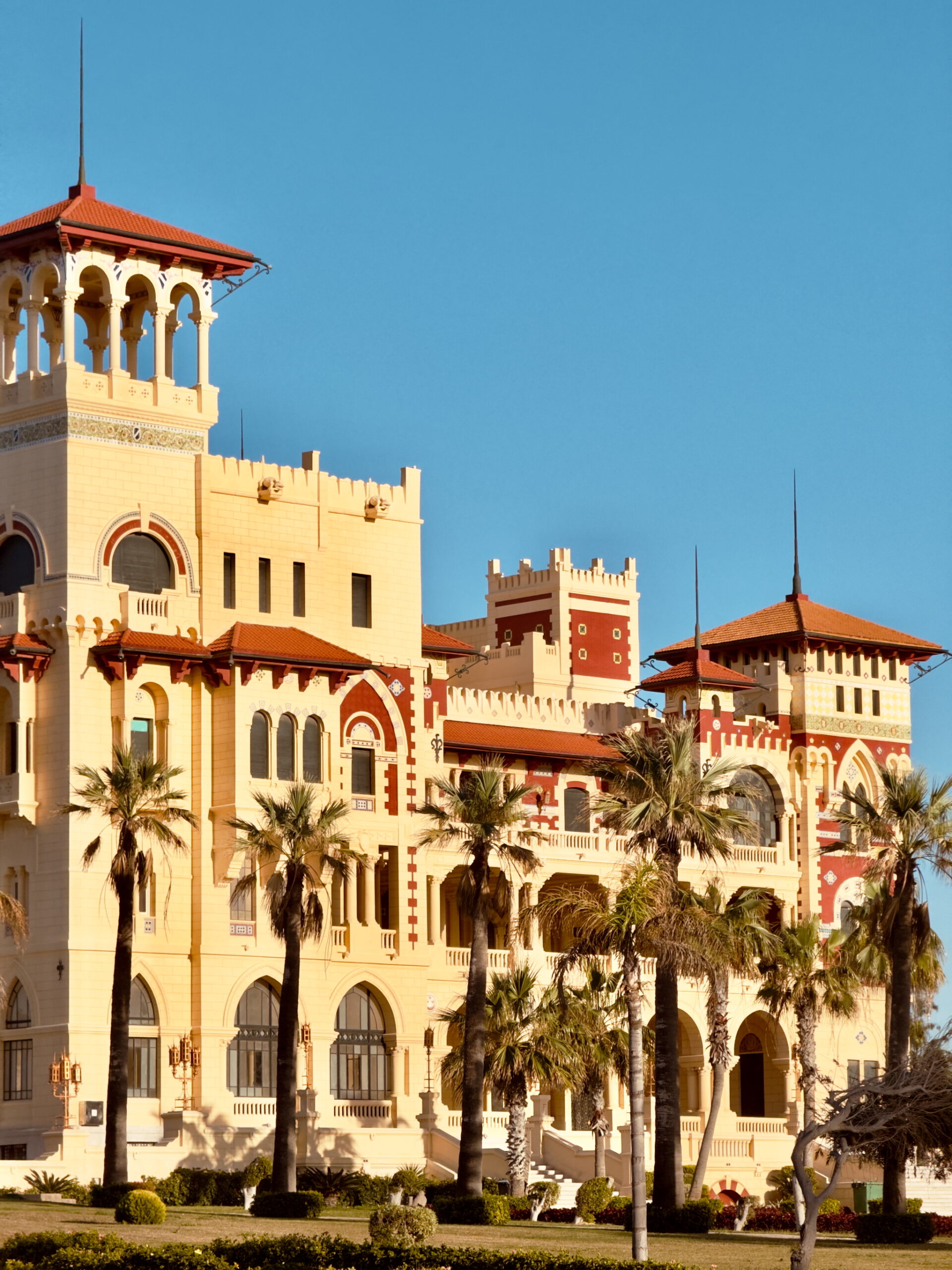
Surrounding the palaces are the Montaza Gardens, spanning over 60 hectares. These gardens are a lush oasis, featuring a diverse array of plants, trees, and flowering shrubs, some of which are rare species. The meticulously landscaped gardens, with their palms and trimmed hedges, create an atmosphere of serene beauty, offering a tranquil escape from the bustle of the city. The gardens also host several smaller buildings and villas, adding to the area’s allure.
Today, the Montaza Palace is more than just a historical site; it’s a popular recreational destination for both locals and tourists. The palaces themselves, with their rich history and architectural beauty, draw visitors interested in Egypt’s royal past and architectural heritage. Meanwhile, the gardens provide a picturesque setting for leisurely walks, picnics, and family outings.
In essence, the Montaza Palace encapsulates a piece of Egypt’s royal history and architectural grandeur. Its blend of Ottoman and European architectural styles serves as a vivid reminder of the cultural and historical exchanges that have shaped Alexandria. The palace, along with its stunning gardens, continues to be a symbol of the city’s elegance.
The gardens visit concluded our day, and I found myself strolling along the beach, the sunset painting the sky in shades of orange and purple, a serene end to a day filled with discovery.
Our second day in Alexandria began with a late awakening. Despite the short night, our spirits were high, eager to uncover more of the city’s hidden gems. We delved into the depths of history at the Catacombs, an underground wonder that whispered tales of ancient rituals and beliefs.
The Catacombs of Kom El Shoqafa: A Subterranean Journey Through Cultures
The Catacombs of Kom El Shoqafa in Alexandria are a fascinating and unique archaeological site, offering a glimpse into the complex cultural and historical tapestry of Egypt during the Roman period. Discovered in 1900 when a donkey accidentally fell into one of the access shafts, these catacombs represent one of the most significant examples of the blend of Egyptian, Greek, and Roman cultural and architectural elements.
The name “Kom El Shoqafa” translates to “Mound of Shards” referring to the heaps of terracotta fragments found at the site, remnants of the jars and objects used by visitors to the tombs in ancient times. This site, dating back to the 2nd century AD, serves as a classic example of the fusion of different burial practices and artistic styles, a phenomenon common in Alexandria due to its position as a cultural melting pot.
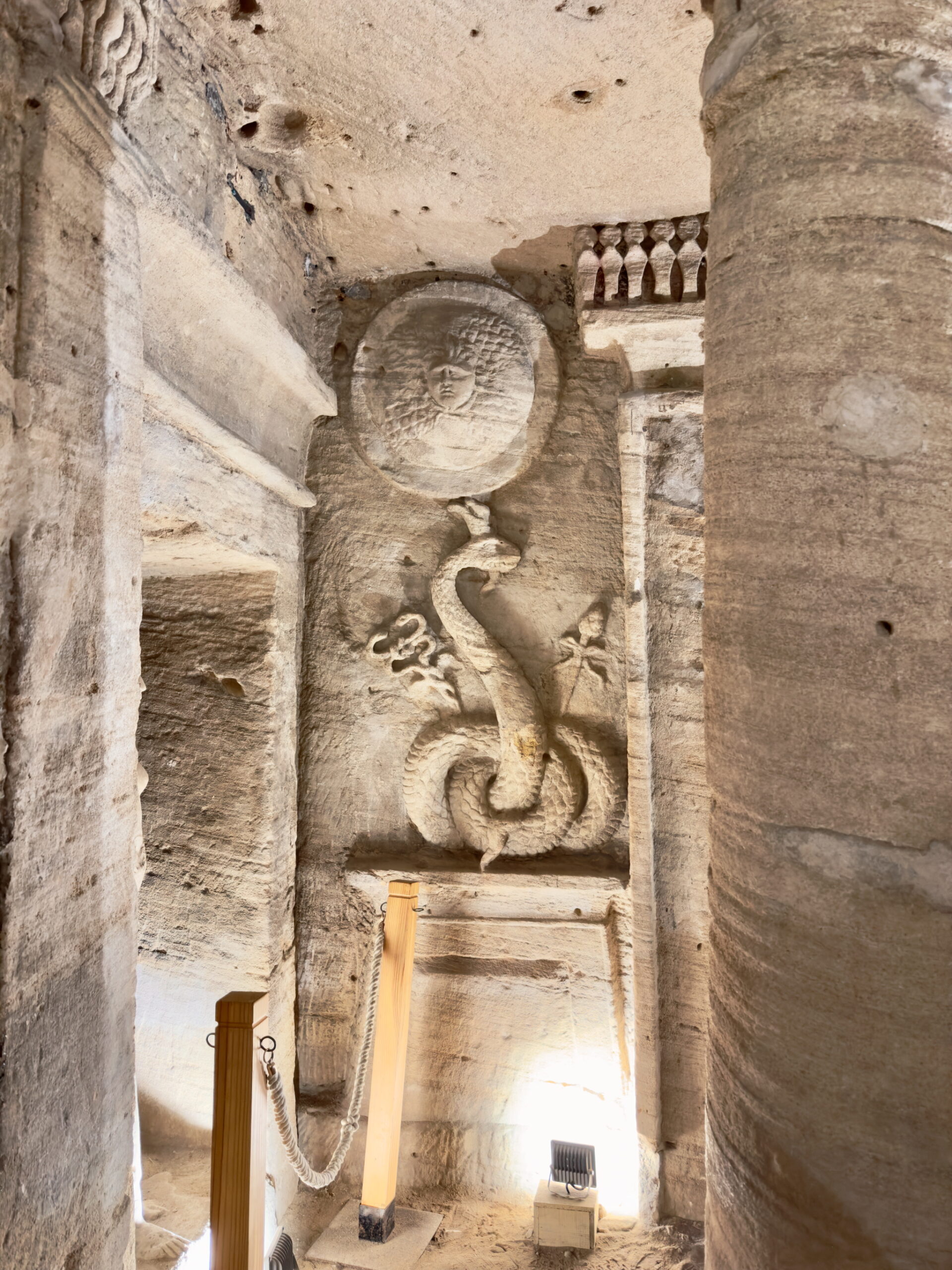
The catacombs are laid out on several levels underground, carved out of the solid rock, descending to a depth of about 35 meters. The complex includes a series of tombs, a banquet hall (where relatives of the deceased would conduct ritual meals), and the main burial chamber. The architecture and artistic works within the catacombs display a remarkable synthesis of Egyptian, Greek, and Roman styles. For example, you can find Egyptian burial motifs alongside Greek and Roman sculptures and inscriptions, a testimony to the multicultural nature of Alexandria at the time.
One of the most striking features is the Hall of Caracalla, which contains the bones of humans and animals, believed to be the remains of the sacrifices to the gods. According to some theories, these might be the remains of Christians persecuted by the Emperor Caracalla.
The main tomb is an extraordinary example of this cultural blend. It features a sarcophagus with reliefs that show a unique mix of Egyptian and Greco-Roman motifs. The decoration includes images of the winged god of the underworld, Anubis, dressed in Roman military garb, and the serpent-headed Medusa, a Greek mythological figure.
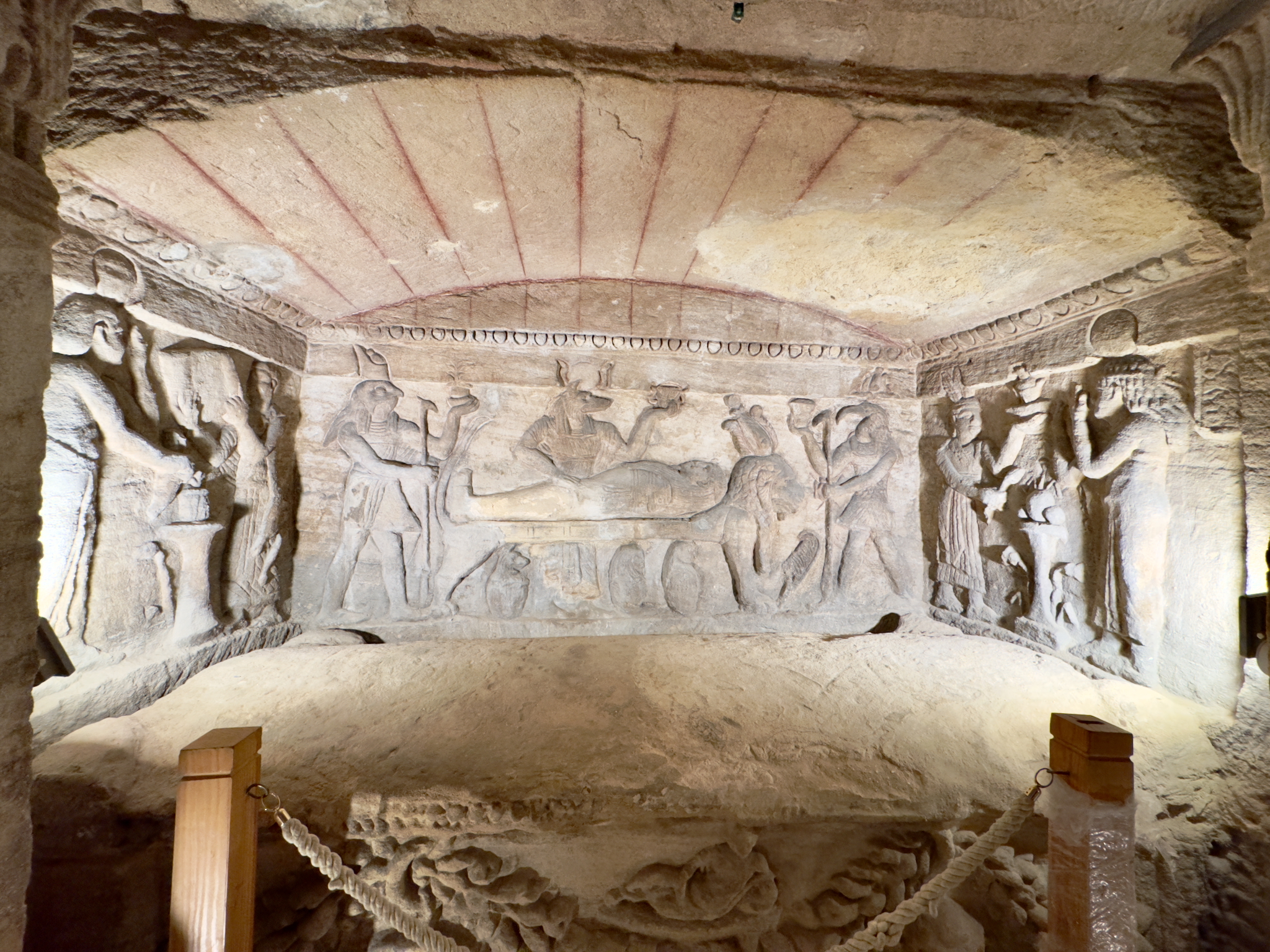
Today, the Catacombs of Kom El Shoqafa are not just an important archaeological site for scholars; they are also a significant tourist attraction. Visitors can descend into the earth and walk through corridors lined with burial niches, exploring this ancient necropolis and marveling at the fusion of artistic and cultural traditions. This site stands as a testament to the diverse and cosmopolitan nature of Alexandria in antiquity, where different cultures and traditions intertwined and coexisted harmoniously.
After the catacombs, our journey continued to Pompey\’s Pillar, a soaring testament to the Roman influence in Egypt. Standing beneath this ancient column, we felt a connection to the past, a bridge spanning centuries of history.
Pompey’s Pillar: Unraveling the Myths of Alexandria’s Majestic Column
Pompey’s Pillar stands as a singular testament to the rich and varied history of this historic city. Contrary to what its name suggests, the column has no actual connection to the Roman general Pompey. Instead, it was erected in honor of Emperor Diocletian in the late 3rd century AD, a period marked by turmoil and recovery in the Roman Empire, particularly in Egypt.
This towering column, made of red Aswan granite, reaches a height of approximately 28 meters (around 90 feet), including its base and capital. It is one of the largest of its kind constructed outside of the imperial capitals of Rome and Constantinople, highlighting Alexandria’s importance in the Roman world. The Corinthian column is remarkable for its craftsmanship and the sheer size of its single granite shaft, which is about 2.7 meters in diameter.
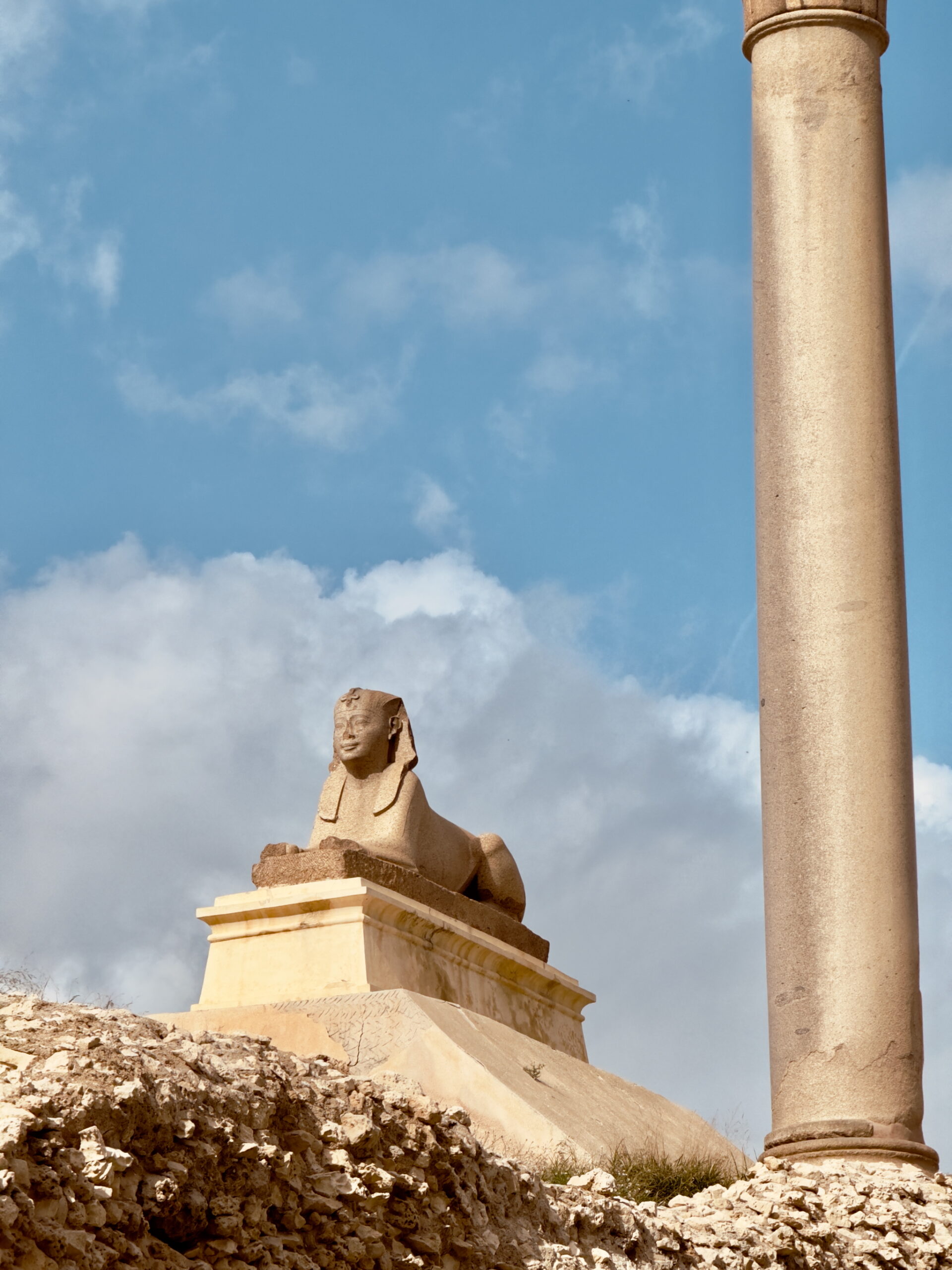
The history behind the column is as intriguing as its misattribution. It was erected to commemorate Emperor Diocletian’s siege of Alexandria, which ended a rebellion in the city. According to historical accounts, after the siege, Diocletian supplied the city with food to alleviate a famine caused by his own siege. The grateful Alexandrians erected this monument in his honor, and an inscription at the base of the column attests to this.
The misnomer “Pompey’s Pillar” dates back to the Middle Ages when Crusaders mistakenly believed the column marked the burial site of the Roman general Pompey, who was assassinated in Egypt in 48 BCE. This misconception persisted, and the pillar became an enduring symbol of the city, despite its actual origin and purpose.
The site around the pillar also holds archaeological significance, with remains of the Serapeum – a temple dedicated to the Greco-Egyptian deity Serapis – found nearby. This area provides valuable insights into the religious and cultural dynamics of Alexandria under Roman rule.
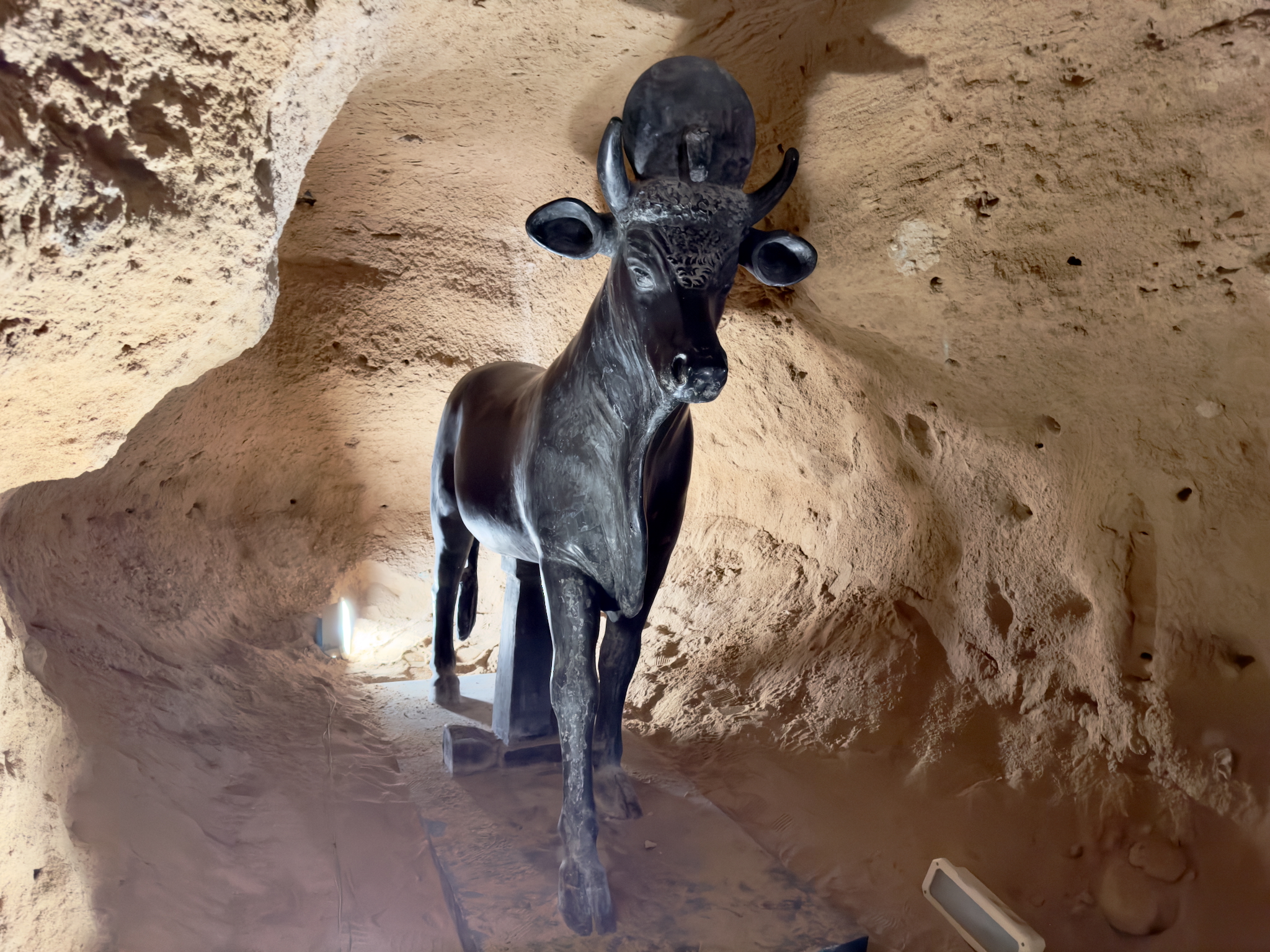
Today, Pompey’s Pillar stands as a prominent landmark in Alexandria, drawing visitors from around the world. It symbolizes not only the city’s rich history as a hub of Roman power in Egypt but also the layers of misunderstanding and myth that often accompany ancient monuments. The column’s misattribution to Pompey adds to its allure, making it a symbol of the intertwining of history and legend that characterizes much of Alexandria’s past.
Goodbye Alexandria!
Reluctantly, we bid farewell to Alexandria and set off back to Cairo. A brief stop for lunch on the road provided a moment of reflection on our enriching experiences.
Back in Cairo, we made a stop at the new museum, a modern-day shrine to Egypt’s rich heritage. Although we didn’t explore its exhibits, the bazaar within its walls offered a final chance to acquire mementos of our journey.
The day concluded with heartfelt goodbyes to Mona, our incredible guide, whose insights and stories had enriched our understanding of this ancient land. Our final outing in Cairo took us to the Mall of Egypt for a shopping time with life and a reminder of the country’s vibrant present.
Now, back at the hotel, I pen these words, a tapestry of memories from a land where history breathes through every stone and sunset. As I prepare to close this chapter of our Egyptian adventure, I look forward to sharing a final summary, a tribute to a journey that has etched itself indelibly in my heart.


